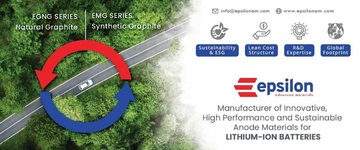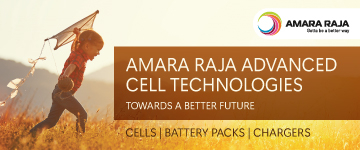IESA to host the 6th World Energy Storage Day Global Conference & Expo on Sept. 22
India Energy Storage Alliance (IESA) is all set to host the 6th World Energy Storage Day (WESD) on Thursday, September 22.
With only a week left for WESD 2022 - Global Conference and Virtual Expo, Ashok Thakur, Editor-in-Chief, Emerging Technology News (ETN) caught up with Dr. Rahul Walawalkar, President & MD - CES and IESA to understand what to expect from the forthcoming edition of WESD, and why the industry and policymakers across the globe must join hands in this global movement.
Q: Who all should join the World Energy Storage Day (WESD) 2022?
Dr. Rahul: WESD is a global movement. I encourage all participants to join the event. We will have more than 100 CXOs from leading companies as well as some of the top researchers and policymakers from 30+ countries who will be speaking at the event. So, it is a great opportunity to learn from the top minds in the industry on a single platform.
Participants also have a choice where they can focus either on a particular session that focuses on their [geographical] region. We have divided the world in four regions. APAC, starting with China, Japan, Korea, Australia, and New Zealand as the first region; India, the Russian sub-continent as the second region; Europe, the Middle East, and Africa as the third region, and then North and South America as the fourth region. So people can either focus on just their region or participate in the full conference. If they are focused just on one particular segment such as stationary storage, e-mobility, green hydrogen, or manufacturing they may want to participate in the sessions related to those technologies across different regions. So there will be some overlap between the region, but, in terms of the planning, we have tried to make sure that people who are interested in any one functional area can navigate from different regions without having any significant overlap. That way, people can hold up for a span of maybe 15-16 hours and learn what is happening in a specific segment in more than 30 different countries and keep track of those developments. This is also a great opportunity for students to learn. So again, the basic conference registration is free so anyone can register and listen to any of the sessions live.
Apart from the 16 conference sessions which will cover stationary, e-mobility, green hydrogen, and manufacturing in each of the regions, we will also have 10 workshops, which will cover different topics such as Giga Factory Supply Chain, Women in Energy, Skill Development, Solar-plus-Storage, Energy Storage Modeling and Optimization, and Urban Air Mobility and a few others such as Safety and Fire which is a workshop led by Underwriters Laboratories Inc. (UL). So, there are a lot of learning opportunities where people can pick and choose areas which they want to attend.
If people are interested in networking, then there is also a premium option available, where people will get behind-the-scenes access to the networking lounge, an opportunity to interact with the speakers as well as get access to the recordings from the various sessions and presentation materials that have been shared throughout the day, at a nominal fee of $99.
Last year, we had participation from more than 5,000 delegates from 130 countries, and this year we are expecting to exceed that.
Q: So we can say, we are trying to create the platform for all these sectors to come together, deliberate, and show their strength on World Energy Storage Day?
A: Yes. This is a great platform where leading companies will get to showcase what they have achieved over the past year, as well as share their roadmap for the coming 3-5 years.
The same with policymakers, they will be talking about the key policy changes that have happened in each of the regions over the last 12 months and what the industry can expect in each of the regions in the upcoming 12-24 months. So, this is a great opportunity for both -- those who are speaking at WESD 2022 to showcase their capabilities and advances, as well as for others looking to learn, to take benefit and leapfrog in terms of learning from these leaders.
Q: We have observed that there is industry participation at WESD but in today's time you see a lot of governments also supporting the event. So, why is it important for the governments/policymakers to join on this particular day?
A: From governments' and policymakers' point of view, they usually try to learn from other leaders. Some regions have emerged as global leaders like the US. More recently, China and Europe have taken the lead in pushing for advanced storage and e-mobility manufacturing so other regions and governments can learn from their experience and make sure that they are in a position to lead.
For example, countries like India have demonstrated in areas of adoption of solar technology, or cellular mobile technology. Although India was not a leader initially, when the technology adoption started by tapping into it at the right point, India was able to become one of the top markets and also benefited from these technology transitions.
There is a great opportunity for many countries to learn from the experience of the last 10-15 years. The regions that have promoted storage and are now getting on the adoption cycle, can help other countries leapfrog and jump through some of the linear learning curves, which otherwise countries go through. So through the World Energy Storage Day (WESD), we are all trying to accelerate this process, increase the adoption of these advanced technologies, and also encourage global collaborations, because that is very important.
Often, people think that their country is unique. Their region is unique. Some environmental conditions are unique, but when you are looking at the experiences from around the globe, there are every type of use-case for every type of environmental condition based on what individual countries may be facing. So, there are enough learnings already from elsewhere in the world, and by learning from that we can accelerate the timeline for the adoption of these technologies.
Q: Moving on to the sessions at WESD 2022, can you explain what each session will cover? Say the manufacturing session, what can the audience expect from it?
A: Over the last five years, the term giga factories have come to prominence. These manufacturing sessions are expected to focus on the giga factories, not necessarily only for lithium-ion batteries but it would be for any technologies, batteries, electrolyzer, or EV manufacturing. Therefore, we will have some of the thought leaders and practitioners from around the world who will come and share about how they have gone ahead and set up giga factories and what others can learn from their experience.
One critical challenge that is going to come up in the next 4-5 years is related to the supply chain. This is because all the giga factories are now looking at scaling their global manufacturing operations for advanced lithium-ion manufacturing from 1000GWh to more than 5,000 GWh to 7,000 GWh within the next seven years. You need to tap into a much more diverse supply chain as well as start paying much closer attention to some of the environmental parameters. So, we will be focusing on various aspects of giga factories as well as their associated supply chain and manufacturing equipment during the manufacturing sessions in each region.
Similarly, the other three sessions for the main conference will cover stationary energy storage, where we will be talking about various storage applications for supporting grid for customer-cited energy storage deployment for renewable integration and the type of policy and market mechanisms that have created opportunities for deployment of storage in different parts of the world.
In the e-mobility session, we will be focusing both on e-mobility infrastructure in terms of the EV charging system development and learnings from around the globe as well as the various forms of mobility such as four-wheeler, two-wheeler, three-wheeler, and electric buses.
In the green hydrogen session, we will be focusing on the rapid emergence of green hydrogen as a technology for decarbonizing the industrial sector. We see a lot of differences where in certain regions green hydrogen is seen as a solution for decarbonization of the power sector by converting existing gas turbines into directly hydrogen as a fuel source, whereas in other regions like India, the focus is more on applications such as petroleum refining or the creation of ammonia or fertilizer and then using green hydrogen for replacing gray hydrogen and trying to reduce the carbon intensity of these sectors.
So we will be covering all these different aspects in the sessions. Apart from this, there are 10 thematic workshops. Here, the idea is that people from different regions may be interested in learning common themes, such as safety and fire in EVs. In the Safety and Learning session, UL will lead by sharing insights from the work being done around the globe. We will focus on other aspects such as skill development, where we will be talking about how different countries are taking initiatives for meeting the growing requirements in these sectors in terms of scaling, and what we can do in terms of accelerating and scaling platforms that are already developed and deployed in different regions and try to encourage global collaborations therein.
Other workshops include solar-plus-storage, where we will specifically focus on the emergence of solar as the cheapest energy source, and how storage technologies can help in making solar a much more dispatchable and round-the-clock asset. Then, we will also talk about storage modeling and storage optimization which are essential when you are looking at building and then operating projects in any of the market regions.
We have a session on women in energy to talk about how we can work together for involving women in the sector and benefit in terms of diversification of the workforce.
Q: At WESD 2022, we also have a Global Startup Showcase. Can you shed light on that initiative?
A: Yes. The way I think about it is as a startup competition. For the Global Startup Showcase 2.0, the competition is currently open and startups from around the world are applying right now.
The application window is open till 22nd of September and we have a panel of 15+ experts who will be shortlisting a few startups. These startups and the top 10 startups will get an opportunity to present to 50+ global investors who are actively looking at investing in energy storage and mobility-related startups.
You can visit the Global Startup Showcase 2.0 website to learn about the competition and the experience of various investors and participants from last year. And, if you are a startup working on some innovative technology then feel free to apply. We look forward to connecting you with potential investors, as well as strategic partners through this platform.























